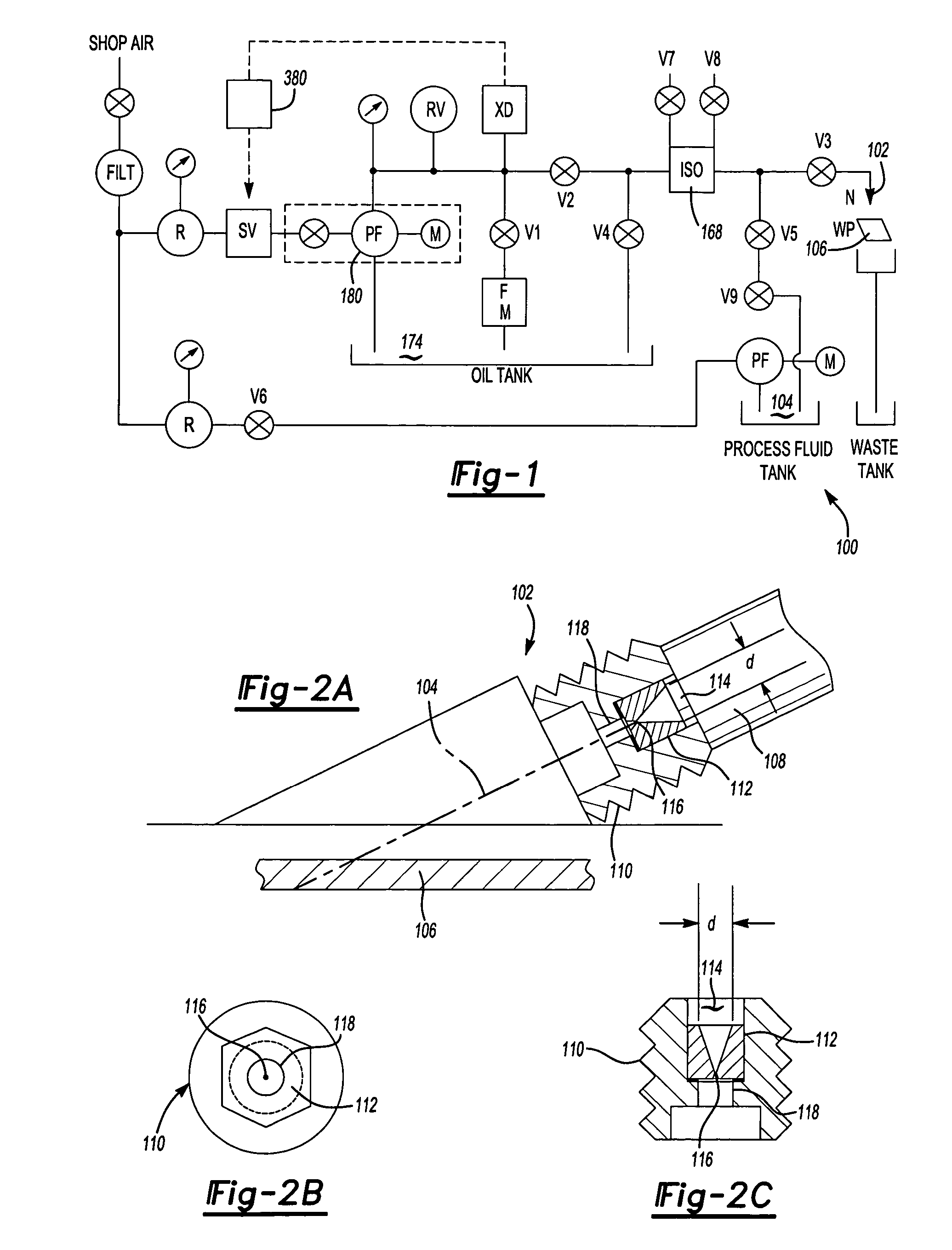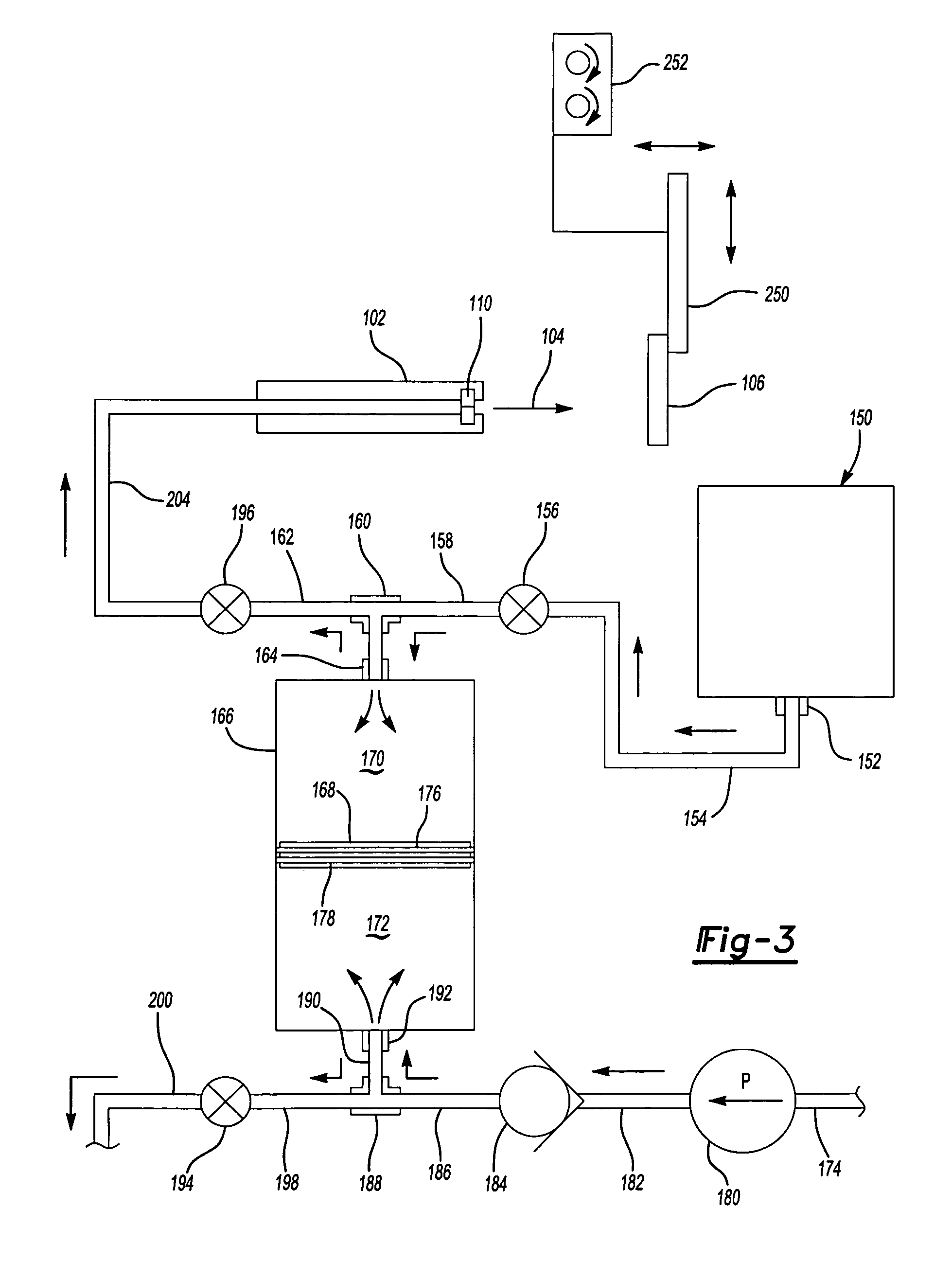Suspended abrasive waterjet hole drilling system and method
a waterjet hole and abrasive technology, applied in the field of hole drilling, can solve the problems of not meeting the special concerns of hole drilling, recast material on the side of the hole wall that is prone to cracking and failure, and is not suitable for drilling small diameter holes, etc., to achieve high abrasive particle velocities, increase fluid viscosity, and increase fluid viscosity
- Summary
- Abstract
- Description
- Claims
- Application Information
AI Technical Summary
Benefits of technology
Problems solved by technology
Method used
Image
Examples
Embodiment Construction
[0014]FIG. 1 is a schematic diagram illustrating various primary components of a drilling system 100 according to one embodiment of the invention. Generally, the system 100 sends an abrasive working fluid 104 through one or more jet heads 102 to a target 106. The flow and pressure of the working fluid 104 is controlled by flow of a control fluid 174, such as oil, hydraulic fluid, or water, through the system 100 via a series of valves. In the schematic shown in FIG. 1, an isolator 168 prevents the working fluid 104 from contacting the control fluid 174. An air-driven intensifier pump 180 is used to control the pressure of the control fluid 174 and therefore the working fluid 104. In one embodiment, the intensifier pump 180 is able to produce 10,000 psi of control fluid 174 at up to 6 gallons / minute with no compressible or inertial stored energy via control of a high-speed pneumatic servo valve SV.
[0015]The isolator 168 is charged by manipulation of various valves in the system 100. ...
PUM
| Property | Measurement | Unit |
|---|---|---|
| diameter | aaaaa | aaaaa |
| pressure | aaaaa | aaaaa |
| diameter | aaaaa | aaaaa |
Abstract
Description
Claims
Application Information
 Login to View More
Login to View More - R&D
- Intellectual Property
- Life Sciences
- Materials
- Tech Scout
- Unparalleled Data Quality
- Higher Quality Content
- 60% Fewer Hallucinations
Browse by: Latest US Patents, China's latest patents, Technical Efficacy Thesaurus, Application Domain, Technology Topic, Popular Technical Reports.
© 2025 PatSnap. All rights reserved.Legal|Privacy policy|Modern Slavery Act Transparency Statement|Sitemap|About US| Contact US: help@patsnap.com



